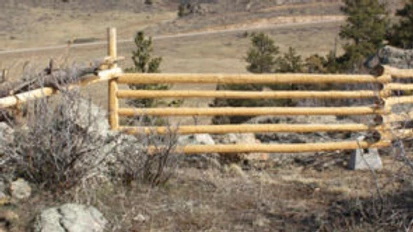By: Grant Pound

Before you buy any yaks take a good look at your fencing. I kept reading that yaks are “easy keepers” and that they didn’t challenge fencing. That’s true, they are easy keepers as long as they feel like being kept. It will probably be in your first week that they will try to find a way out.
A weak gate, a fence that goes around rocks, widely spaced wires, panels tied up with baling twine are all good candidates for the great escape. Once the yaks are accustomed to you and your care they are not so interested in crossing fences unless they are hungry, scared or horny. I had a steer that could clear a five-foot panel without touching it. He only did that when everyone was rounded up for vet work. I had an eight-month pregnant heifer jump two barbed wire fences to go be with the boys. However, this winter my herd got out (the llama knows how to open the gate) and I found tracks a mile from their pasture. When I returned all the yaks were in their pasture quietly chewing their cud. They had gone out for a romp and decided there were no treats to be had out in the bigger world. I changed the gate latch.
We have several types of fencing on our land. Four to five-strand barbed wire is on a lot of the perimeter. We have z fence made of five corral poles interwoven in some areas that are all rock. We have some jury-rigged sections between rock formations, and some high-tensile six-strand in cross fenced areas.

The high-tensile can be made hot and is the most effective electric fencing I’ve tried because it is also a physical barrier. I’ll write separately about electric fence. The five-strand barbed wire seems to be the most porous. I have had to add a lot of fence stays in some sections. Once they start going through a spot as calves they will always test it. They don’t seem to realize they have gotten bigger.



